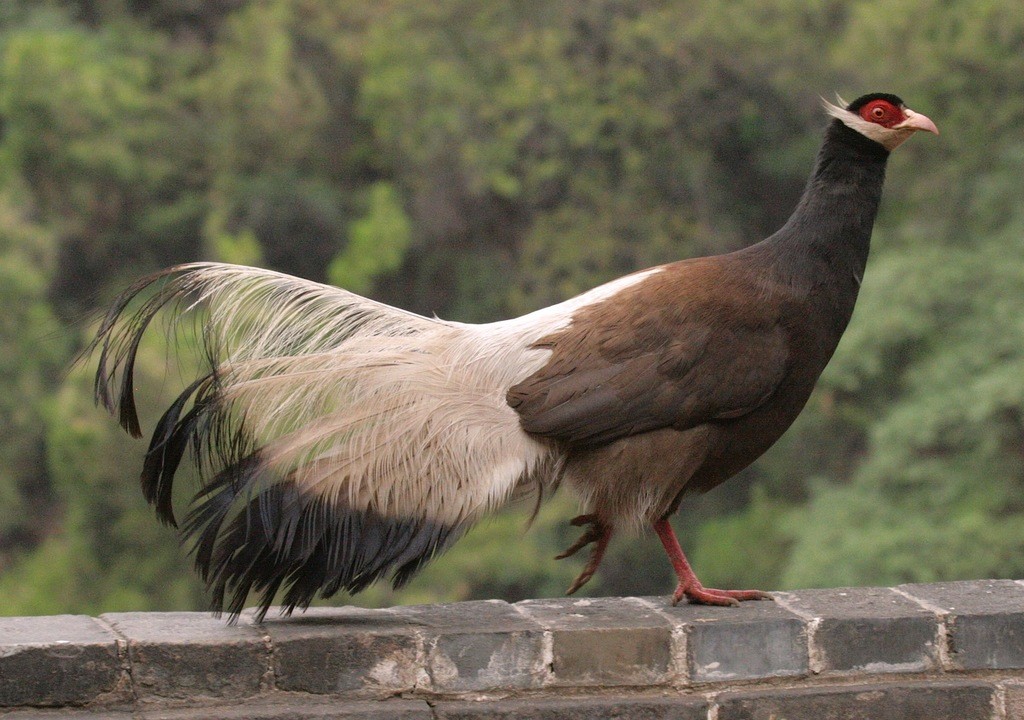Brown Eared Pheasant
A species of Eared-pheasants Scientific name : Crossoptilon mantchuricum Genus : Eared-pheasants
Brown Eared Pheasant, A species of Eared-pheasants
Botanical name: Crossoptilon mantchuricum
Genus: Eared-pheasants
Content
Description General Info
 Photo By neomorphus , used under CC-BY-NC-4.0 /Cropped and compressed from original
Photo By neomorphus , used under CC-BY-NC-4.0 /Cropped and compressed from original Description
The brown eared pheasant (Crossoptilon mantchuricum) is a large, 96– to 100-cm-long, dark brown pheasant endemic to the mountain forests of northeastern China (Shanxi and nearby provinces). The species was first described by Robert Swinhoe in 1863. It has stiff white ear coverts behind the eyes, which look like a moustache. The crown is black with red bare facial skin and its tail of 22 elongated, white feathers is curved, loose and dark-tipped. Both sexes are similar in plumage. The rarest member in the genus Crossoptilon, its diet consists mainly of roots, bulbs, and plant matter. The female lays five to eight large, pale stone green eggs, which take 28 days to hatch. Due to isolated populations, deforestation, and poaching (despite being a protected species), the brown eared pheasant is evaluated as vulnerable on the IUCN Red List of Threatened Species. It is listed on Appendix I of CITES. 
Size
1 m
Nest Placement
Ground
Feeding Habits
Brown Eared Pheasant primarily consumes a varied diet of plant matter, including 62 recorded species of plants, fungi, and some animals. Its main diet consists of onions, sea buckthorn, cacalis, strawberries, and vetch. Brown Eared Pheasant typically forages in small groups, digging for roots around grass clumps, with larger assemblies observed during non-breeding seasons.
Habitat
The brown Eared Pheasant inhabits montane forests with a mix of broadleaved, deciduous, and coniferous trees, alongside a dense shrub understorey. Preferring regions with moderate sunlight, gentle slopes, and near water sources and paths, the bird selects habitats with larger trees, less dense shrubs, and scanty grass. Breeding grounds include shrub-dense areas on moderately steep slopes, away from water and paths. Roosting occurs in trees within steep terrain, distanced from forest edges.
Dite type
Herbivorous